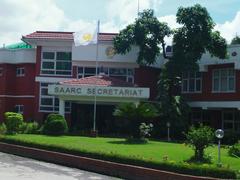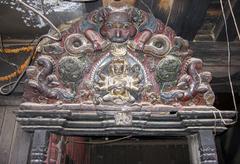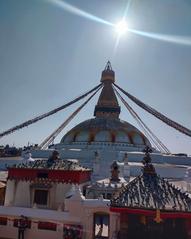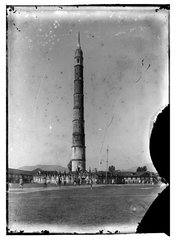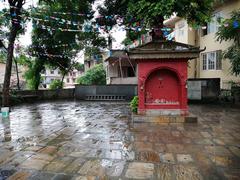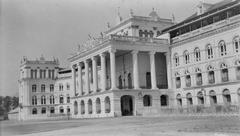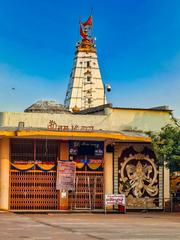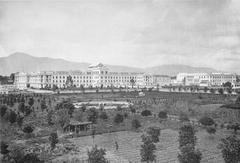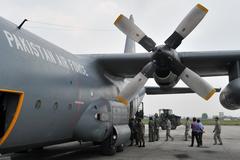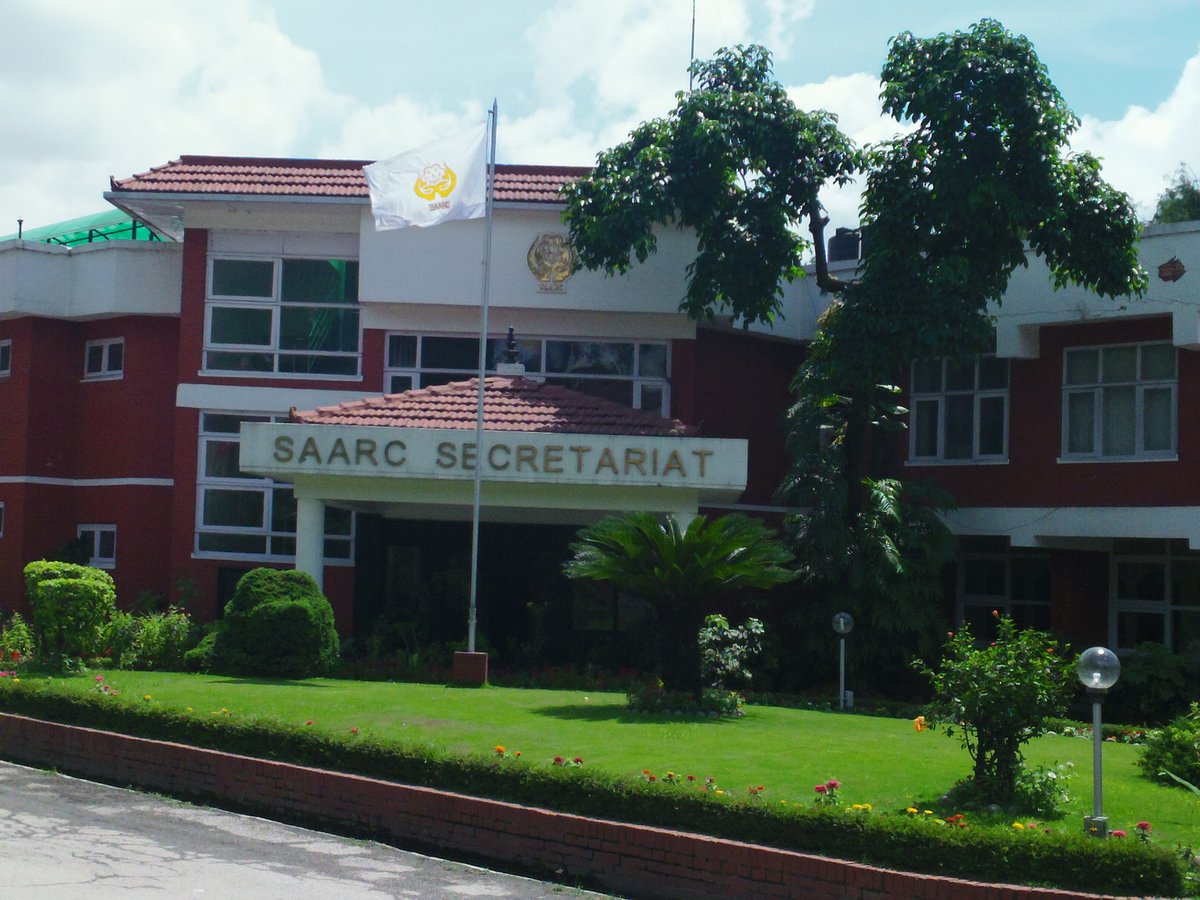
South Asian Association For Regional Cooperation Secretariat
South Asian Association for Regional Cooperation (SAARC) Secretariat Kathmandu: Visiting Hours, Tickets, and Travel Guide
Date: 15/06/2025
Introduction
The South Asian Association for Regional Cooperation (SAARC) Secretariat, located in Kathmandu, Nepal, is a symbol of regional unity and the central hub for promoting cooperation among South Asian nations. Since its establishment on January 16, 1987, the Secretariat has played a pivotal role in fostering peace, development, and multilateral diplomacy among its eight member states: Afghanistan, Bangladesh, Bhutan, India, Maldives, Nepal, Pakistan, and Sri Lanka (Drishti IAS; MOFA Nepal). The Secretariat’s architecture merges functional design with traditional Nepali aesthetics, reflecting both the heritage and aspirations of South Asia (SAARC Secretariat).
This guide offers comprehensive details for visitors, including historical context, organizational structure, visiting hours, ticketing information, travel tips, nearby attractions, accessibility, special programs, and frequently asked questions. Whether you are a history enthusiast, student of international relations, or a curious traveler, the SAARC Secretariat is both a learning opportunity and a cultural landmark.
Table of Contents
- History and Establishment
- Organizational Structure and Functions
- Diplomatic and Regional Significance
- Visitor Information: Hours, Access, and Tickets
- Travel Tips and Accessibility
- Nearby Attractions in Kathmandu
- Special Events, Programs, and Guided Tours
- Visitor Experience and Educational Value
- Frequently Asked Questions (FAQ)
- Conclusion
- References
History and Establishment
The SAARC Secretariat was inaugurated on January 16, 1987, following the adoption of the SAARC Charter in 1985 (ssbcrackexams.com). Nepal’s selection as the host country underscored its neutral and facilitative role within South Asia, symbolizing sovereign equality and mutual benefit among the member states (MOFA Nepal).
The Secretariat coordinates the activities of SAARC, including the implementation of decisions made at biennial summits and various technical committees. Its establishment marked a significant diplomatic milestone, positioning Nepal as a central facilitator for South Asian diplomacy.
Organizational Structure and Functions
The Secretariat is led by a Secretary General, appointed on a rotational basis among member states for a three-year term (SAARC Secretariat). Supporting the Secretary General are eight Directors from each member nation, along with professional and support staff.
Core Functions
- Coordinating and monitoring implementation of SAARC decisions and regional initiatives
- Facilitating meetings, summits, and technical committees
- Acting as the chief communication conduit among member states
- Supporting specialized bodies and regional centers
Governing Bodies
- Summit: Biennial meeting of Heads of State/Government
- Council of Ministers: Annual meeting of Foreign Ministers
- Standing Committee: Policy formulation by Foreign Secretaries
- Programming Committee: Senior officials manage budget and administration
- Technical Committees and Working Groups: Focus on sectors such as agriculture, education, and health
Specialized Regional Centres
SAARC has established several specialized centers, including:
- SAARC Tuberculosis and HIV/AIDS Centre (Kathmandu) (STAC)
- SAARC Agriculture Centre (Dhaka)
- SAARC Energy Centre (Islamabad)
- SAARC Disaster Management Centre (Gandhinagar)
These centers coordinate research and policy implementation on their respective themes (NYU Law Globalex).
Diplomatic and Regional Significance
The Secretariat is both a symbol and facilitator of regional solidarity, representing the aspirations of over 1.7 billion people (ssbcrackexams.com). It provides a neutral platform for member states to engage in multilateral diplomacy and consensus-building, crucial in a region marked by complex bilateral relationships (southasiajournal.net).
Key initiatives coordinated through the Secretariat include the South Asian Free Trade Area (SAFTA), disaster management, public health campaigns, and educational exchanges (Britannica SAARC page).
Visitor Information: Hours, Access, and Tickets
Location: 1, Maitighar Mandala, Kathmandu, Nepal
Visiting Hours:
- Monday to Friday, 9:00 AM – 5:00 PM
- Closed on public holidays
Entry Fee:
- Free of charge
Access:
- Public access is limited to certain areas due to the Secretariat’s administrative function.
- Visits are generally by appointment, especially for guided tours or educational groups.
Guided Tours:
- Not offered regularly but can be arranged in advance for official or educational groups (Nebio).
Accessibility:
- Wheelchair accessible, with ramps and accessible restrooms.
Contact:
- Tour and event inquiries should be directed to the official SAARC Secretariat website.
Travel Tips and Accessibility
- Advance Appointments: Recommended for guided tours, group visits, or participation in public events.
- Dress Code: Formal or business casual attire is appropriate.
- Transportation: The Secretariat is centrally located and accessible by taxi, public transport, or rideshare from major hotels and the airport.
- Weather: The best time to visit is from October to March, when the weather is pleasant.
Nearby Attractions in Kathmandu
Combine your visit to the Secretariat with nearby cultural and historical sites:
- Patan Durbar Square: UNESCO World Heritage Site known for its traditional Newari architecture.
- Swayambhunath Stupa (Monkey Temple): An iconic religious complex with panoramic city views.
- Garden of Dreams: A tranquil, restored historic garden.
- Kathmandu Durbar Square: The historic heart of Kathmandu with palaces, temples, and museums.
- Thamel District: Popular for shopping, dining, and local culture.
Special Events, Programs, and Guided Tours
The Secretariat occasionally opens its doors for public seminars, cultural programs, and educational initiatives such as the SAARC Internship Programme (Nebio).
- Internship Programme: Open to students and young professionals.
- Public Events: Announced on the Secretariat’s official channels.
- SAARC Charter Day: Celebrated annually on December 8.
Visitor Experience and Educational Value
Though primarily administrative, the Secretariat offers valuable educational experiences through its public seminars, exhibitions, and internship opportunities. Visitors can view displays on SAARC’s history and ongoing projects. The building itself is an architectural blend of modern and traditional Nepali styles, symbolizing the spirit of regional collaboration.
Frequently Asked Questions (FAQ)
Q: Is the SAARC Secretariat open to the public?
A: Limited public access is available, usually by appointment or during special events.
Q: What are the visiting hours?
A: Monday to Friday, 9:00 AM–5:00 PM, except public holidays.
Q: Is there an entry fee?
A: No, entry is free.
Q: Are guided tours available?
A: By advance request, primarily for educational or official groups.
Q: Can I attend SAARC events or seminars?
A: Some events are open to the public—check the Secretariat’s website for announcements.
Q: Are there internship opportunities?
A: Yes, the Internship Programme is offered twice a year.
Q: Is the building accessible for people with disabilities?
A: Yes, the building is wheelchair accessible.
Conclusion
The SAARC Secretariat in Kathmandu is more than an administrative office—it is a living monument to South Asian unity, diplomacy, and cultural heritage. Visitors can engage with the Secretariat’s story through its programs, architecture, and proximity to Kathmandu’s rich historical sites. For those interested in policy, diplomacy, or regional studies, a visit to the Secretariat offers insights into the challenges and achievements of South Asian cooperation.
Plan ahead by arranging visits in advance, explore the Secretariat’s educational offerings, and take time to discover the nearby cultural landmarks that make Kathmandu a unique destination. For more details, visit the official SAARC website or consult the resources listed below.
References
- Drishti IAS
- Ministry of Foreign Affairs Nepal
- SAARC Secretariat
- Nebio
- Britannica SAARC page
- Samanya Gyan
- SSB Crack Exams
- SAARC Tuberculosis and HIV/AIDS Centre (STAC)
- NYU Law Globalex
